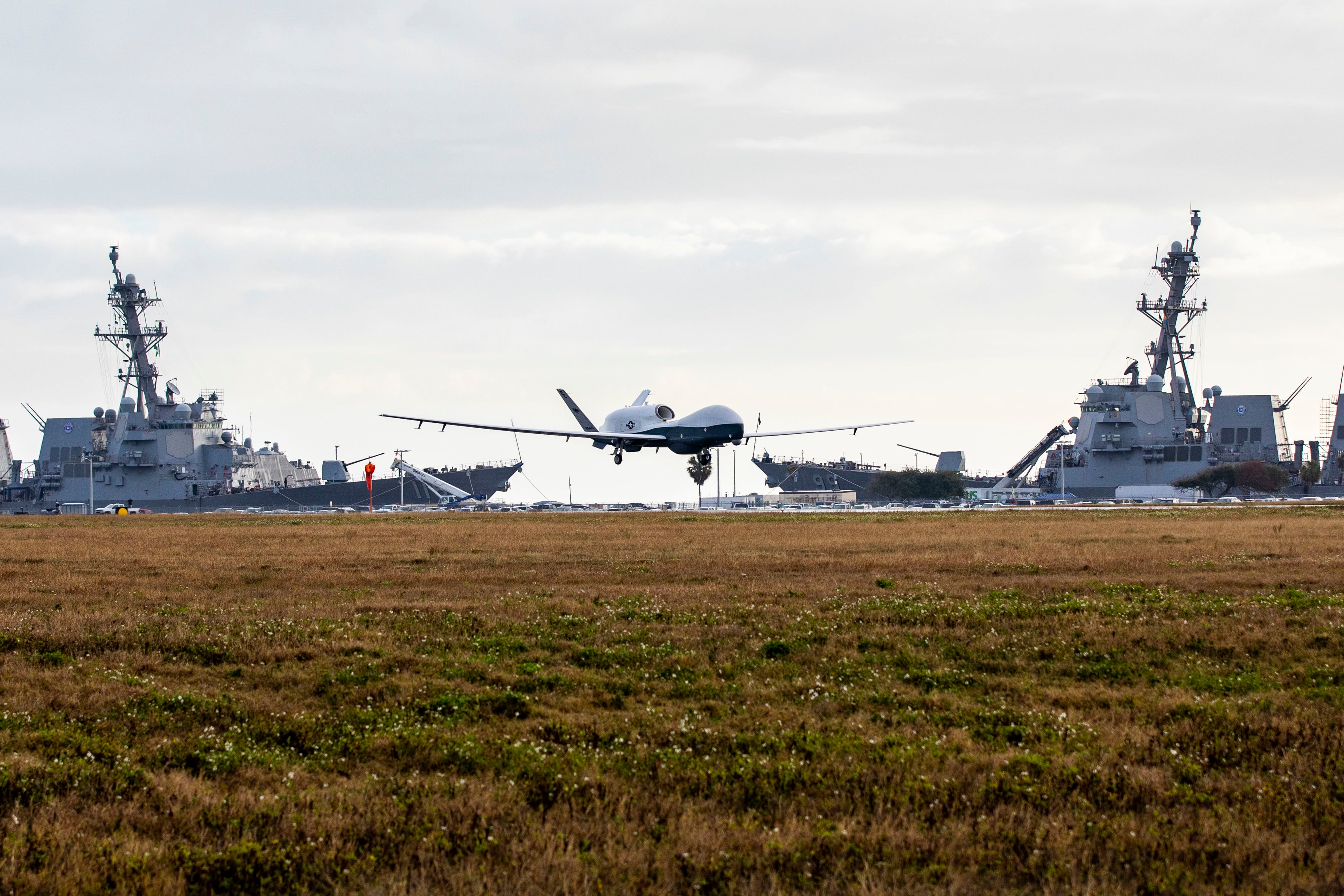The Navy’s MQ-4C Triton surveillance drone has wrapped up a deployment to the Indo-Pacific.
The high-altitude, long endurance UAV, assigned to Unmanned Patrol Squadron 19, completed a rotational deployment to Marine Corps Air Station Iwakuni, Japan, in U.S. 7th Fleet, where the unit worked to develop the aircraft’s tactics, techniques and procedures.
But it won’t be long before the Triton returns to the Indo-Pacific.
The squadron and the drone, which is designed to work hand in hand with the P-8A Poseidon surveillance aircraft, are scheduled to return to 7th Fleet later this year. At that point, the squadron will kick off the MQ-4C’s operational capability period to test out maritime intelligence, surveillance, reconnaissance and targeting operations with an upgraded sensor suite.
“Triton helps bolster our Intelligence, Surveillance, and Reconnaissance (ISR) operations on a global stage,” said Lt. Christopher Lee, a Triton naval flight officer, in a Navy news release. “The communication and safety nets Triton brings to our friendly units is a game-changer.”
Two MQ-4C’s first arrived in Guam at Andersen Air Force Base in 2020 to operate under Commander Task Force 72 in 7th Fleet during an early operational capability period. The drone also deployed to MCAS Iwakuni and Misawa Air Base in Japan to “refine the concept of operations for expeditionary basing” during the deployment, the Navy said.
Unmanned Patrol Squadron 19 is based out of Naval Air Station Jacksonville, Florida.
RELATED

Last month, Northrop Grumman announced that the Triton completed a first-of-its-kind flight test featuring an installed airborne “gateway” that, by hooking into the Triton’s onboard radar and artificial intelligence, relayed sensor data to simulators representing an F-35, an E-2D Advanced Hawkeye and Aegis-class destroyers.
The trial’s objective was to connect air assets with sea assets for a “seamlessly connected fleet,” Ben Davies, vice president and general manager of network information solutions at Northrop Grumman, said in a statement.
This step is key as the Navy develops distributed maritime operations, a concept that requires ships to work together at greater distances, Davies said. The drones have the capacity to operate for more than 24 hours, and can detect, track, classify and identify naval vessels.
“Triton’s altitude, persistence and robust communication links make it an ideal candidate to host the gateway system,” said Jane Bishop, a Northrop vice president and general manager for global surveillance, in a statement. “This demonstration highlighted gateway technology enhancements to Triton that would enable information dominance across distributed maritime assets, including access to the F-35′s robust sensor suite and the E-2D’s battle management capabilities.”





